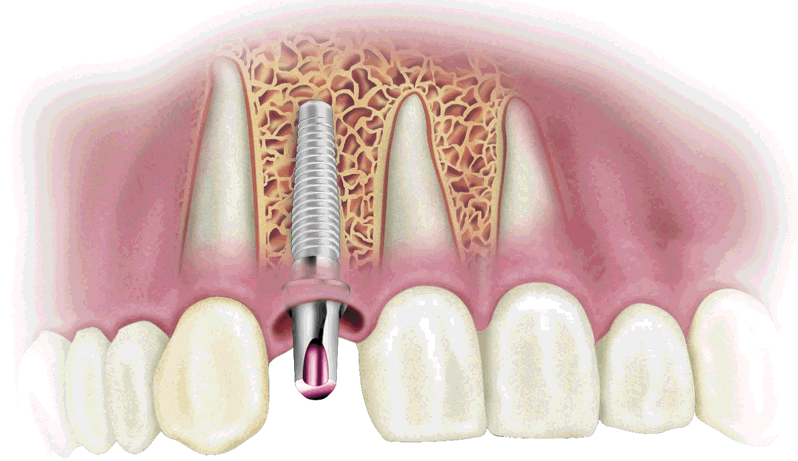Embedded And Impacted Teeth
Teeth Embedding and Impaction Its CausesEmbedded teeth are those teeth which are not erupted usually because of the lack of eruptive forces. This condition may be associated with certain systemic condition that includes rickets, cretinism, and cleidocranial dysplasia. The local factors that inhibit the eruption of teeth are fibromatosis gingivae, where there is dense connective tissue that opposes the normal eruptive forces of the teeth.
Impacted teeth are the ones which are being prevented from erupting due to some physical barriers in the path of eruption. When crowding of tooth occurs, there is only limited space for the newly erupting teeth into the jaw space. Also due to premature loss of deciduous or milk teeth, there will be subsequent partial closing of the area by other members and so the late erupting teeth gets very little space for emerging into the mouth. Sometimes dense fibrous connective tissue of the gingiva may prevent tooth to normally erupt into the oral cavity.

In case of an impaction of a tooth there is complete impaction where the teeth is completely submerged inside the jawbone, and partial impaction where the tooth is only partially encased within the bone and partially in the soft tissue above it. Sometimes a portion of a partially impacted tooth is seen erupted inside the mouth but fails to erupt completely.
Commonly Seen Impacted Teeth
The maxillary (upper jaw) and mandibular (lower jaw) third molars and maxillary cuspids are the most commonly seen impacted teeth. Of the third molar teeth, the most frequently seen are the mandibular ones. It is followed by the premolar teeth and the supernumerary teeth.
Symptoms of Tooth Impaction
A partially impacted tooth can cause malocclusion or a difficult bite, that is obtained when closing two jaws together. Sometimes a partially impacted tooth may get infected either by a dental caries or periodontal pocket formation. The impaction of tooth sometimes causes pain in the region and difficulty to open the mouth. There will be swelling in the soft tissues of the area when a partially impacted tooth gets infected. Because of the abnormal positioning of the impacted tooth within the mouth, it may cause resorption or dissolving away of the roots of the adjacent tooth. Sometimes the impacted tooth may undergo resorption and replaced by the bone when remained unattended.
The definitive diagnosis of a tooth impaction is done by obtaining a radiography of the area.
Types of Impaction
There are different types of impaction of teeth which are commonly seen in most cases. The types of impaction of teeth based on the position of the teeth in the jaw are as follows:
1. Mesioangular Impaction: The tooth lies obliquely in the bone and the crown is pointing to a mesial direction (towards the middle of the jaw). The crown of the tooth usually comes in contact with the distal surface of the root or crown of the tooth on the mesial side.
2. Distoangular impaction: The tooth lies obliquely in the bone with the crown pointing to a distal direction (away from the middle of the jaw) towards the corner of the jaw. The roots of the tooth will be approximating with the distal root or distal portion of the tooth on the mesial side.
3. Vertical impaction:The tooth is placed in its normal vertical position but the adjacent dental Implants cost tooth and the bone prevents it from erupting into the mouth.
4. Horizontal impaction: The tooth is impacted in a horizontal position within the jaw bone either in the maxilla or in the mandible, which are the upper and lower jaw bones. The crown of the http://www.adha.org/ impacted tooth may or may not be in contact with the distal surface of the mesial tooth. The tooth may remain within the bone of the jaw bone. Mostly seen in the 3rd molar tooth.
5. Inverted impaction: The tooth is inverted with the crown of the tooth pointing towards the bone and the roots directed towards the oral side. It is sometimes seen in the ramus of the mandible or in the maxillary tuberosity region.
Treatment of an Impacted Tooth
The treatment of an impacted tooth depends on many factors such as the type of the tooth involved, the type of impaction, and the individual circumstances.
1. The impacted tooth can be allowed to erupt into the oral cavity by doing orthodontic correction or wiring of the adjacent teeth to give eruption space.
2. If the tooth is vertically in position in the jaw, the overlying gingival tissue or bone can be trimmed to provide space for the tooth to erupt normally into the mouth.
3. Surgical removal of the teeth is necessary when the tooth is placed in a difficult position in the jaw that does not allow the tooth to erupt normally in the mouth.
4. When the impacted tooth is remaining harmless, which is positioned deep inside the jaw bone and vital structures, it is left as such to prevent any complications that might arise when removing it.